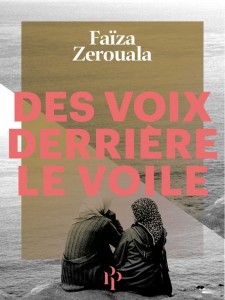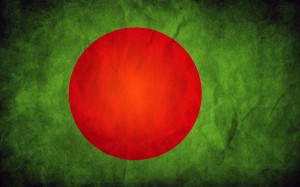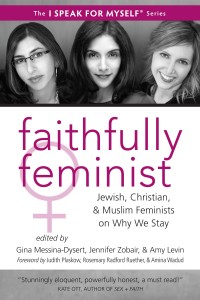My mother belongs to the Zapotec region of Tehuantepec in Oaxaca, Mexico. She is one of the few among my relatives who identifies as “indigenous.” Colonialism in Mexico, and perhaps in many countries in Latin America, was different in that one of the successes of the colonial era was the creation of the caste system and its everlasting effects on indigenous populations. Despite the fact that 200 years have passed since Mexican independence from Spain, I grew up with nationalist discourses that deemed colonization a historic event that had been for the betterment of the indigenous populations. Not only had colonialism allegedly brought cattle, science, civilization and knowledge, but it had also left a trace of whiteness in the population.
Having a non-indigenous father meant that I had trouble identifying as indigenous. I did not know the language and I did not even “look” like one. But eventually my mother became an important advocate of indigenous feminism, which made me reconnect with that part of my identity in unexpected ways. Now, in my graduate studies, I am quite interested in issues of violence against indigenous women and discourses of rights. My interest in this topic lies not only in my desire to pay homage to my heritage, but also in exploring ways to mitigate the violence that indigenous women around the world face.
“Reencountering” my indigenous identity is part of a complex identity cocktail, alongside a self-acquired Muslim identity. As a Muslim, though, I have chosen not to wear the hijab and not to “arabize” by speaking Arabic words that are not mine (and which cannot be translated) or wearing abaayas and other pieces of clothing that are foreign to me. In addition, since the beginning I became quickly acquainted with Islamic feminism and its proponents, and I found a “virtual” community (of which Muslimah Media Watch is a part) where I could explore issues of identity, rights and politics.
With this background and mindset I started reading Do Muslim Women Need Saving? by Lila Abu-Lughod. I must say that the book resonated a lot with me, not only as a self-identified Muslim woman, but as a Third World woman with indigenous background. Abu-Lughod goes to great lengths to discuss Western politics and the discourses around saving Muslim women from patriarchal families, abusive husbands, “brutal” cultures and an “uncivilized” religion.
Much of the information provided by Abu-Lughod is about Muslim women in Egypt, Afghanistan, Iraq, and other countries with Muslim majorities. Thus, I feel that this book will be relevant not only to Muslim women who have an experience of the Third World, but also to non-Muslim women who continue to experience the effects of colonialism and other international interactions like occupations and invasions.
Tasnim recently reviewed Abu-Lughod’s book, going through all the sections of the text, and providing an academic overview of the topics discussed. For me, two topics that were very interesting due to my particular background are the issue of Islam and feminism, and the rights approach. The first topic is dealt with in the first chapter titled, “Do Muslim Women (Still) Need Saving.” The author describes how the term “saving” is used and redefined in particular contexts. Not only is the term used by politicians (such as Bush) to justify wars, but it also travels through a variety of individuals and groups that include right-wing-flirters like Ayaan Hirsi Ali and Western feminist groups that call for action because Muslim women everywhere are being abused (but not when they are killed by wars, drones and military interventions). The author then argues that these arguments have led many Muslim women to have a troubled relationship with “feminists,” and she says, “I hoped that the narratives [in the book] would persuade them [Western feminists] that it is not so easy to talk about ‘patriarchy’ or to put one’s finger on how power works” (6). As a Muslim, a Third World woman and an indigenous woman, I understand the frustration with Western and radical feminists, and I wonder if their approaches to addressing Muslim women will ever change. The “let’s save them” attitude comes along with power, cash and back up from international organizations, as the author explores throughout the book. So will this change any time soon?
Chapter 6, “An Anthropologist in the Territory of Rights,” brings issues of discourse, power and politics into the light of rights approaches. This chapter was particularly interesting to me for two reasons. First, through the story of Khadija, a woman in rural Egypt whose husband is an alcoholic and abusive, Abu-Lughod asks, to what degree can rights discourses address domestic violence? Coming from a family where we have seen cases of substance abuse, domestic violence, and other forms of abuse, I was able to connect with what the author addresses. Violence against women is not black and white, and it does not have only one cause or solution. In the case of Khadija, the author observes that poverty played a big role in her not leaving her husband. While rights approaches present us with a black-and-white view of what is right and what is wrong, the author shows that despite the UN having a Declaration of Human Rights and a Committee on the Elimination of Discrimination against Women, Khadija’s situation was not any better. She was still poor, her family could not assist her, she had children, and the women in village had varied opinions about Khadija’s situation and role in the marriage. As far as we know Khadija is still married… unhappily married.
Exploring similar circumstances among indigenous women in my research, I converge with Abu-Lughod in that the rights discourse may have certain tints of privilege to it. It assumes that empowerment is possible and achieved through institutional support, but it neglects other forces at play. Yes, we can come up with numerous suggestions for rights. Nonetheless, there are two issues at hand. First, a matter of recognition and adoption. Unless women, in their particular circumstances, can see themselves reflected in rights approaches, it is quite challenging to address their concerns. Next, there is the issue of implementation. When we think of rights and the policies that come along, we “imagine” subjects… but are they really interested in what we are offering? Should they be? Why? Therefore, rights approaches have fallen short in identifying the elements that lead to violence, poverty, lack of education and particular gender relations in which women around the world may be immersed. Nevertheless, rights approaches remain strong and almost uncriticised in the academia, media outlets and political settings. So, I wonder if rights approaches could be harming more than helping those in particularly vulnerable positions like Khadija?
Finally, I must say that I really enjoyed the book. It made me think and ask questions. I would have liked to see more examples from outside the Middle East (Abu-Lughod focuses primarily on Egypt), because I think it would have provided more points of contention with the issue of “saving” and different perspectives on the issue of how Muslim women (of different geographic locations) see themselves in the light of rights. Other than that, I feel that this is a valuable book not only for Muslim readers, but for anyone interested in human development, human rights and Third World women.











